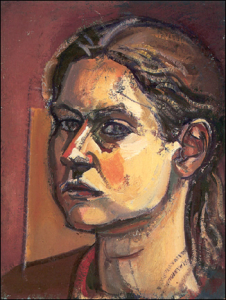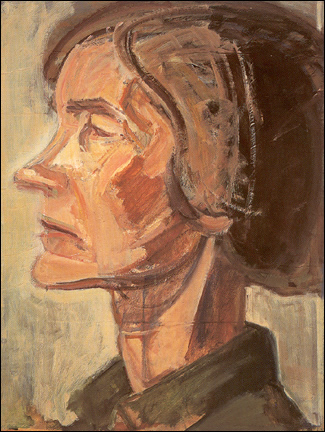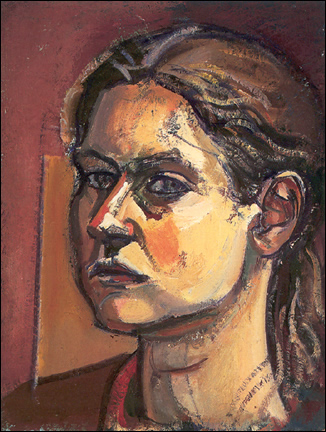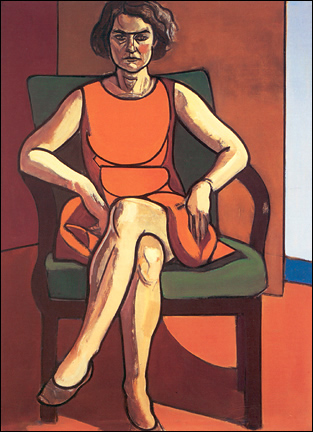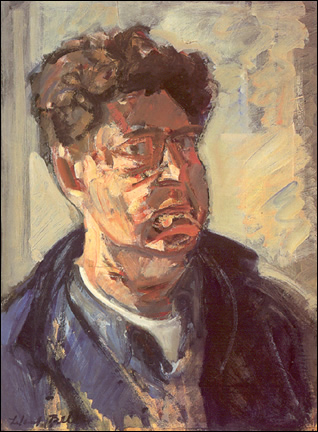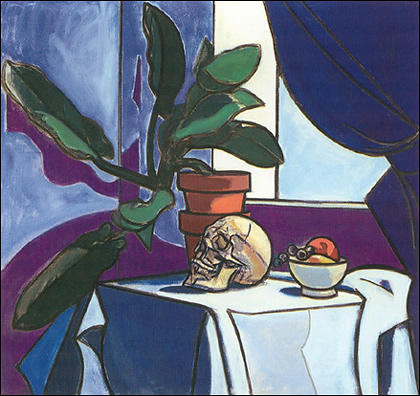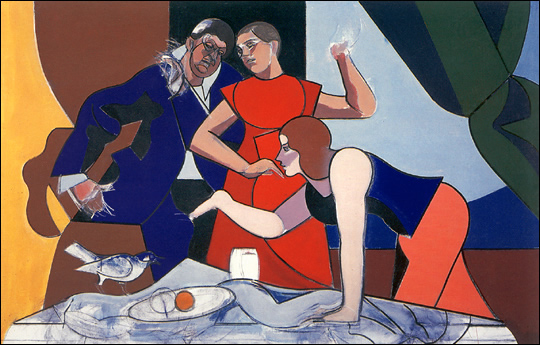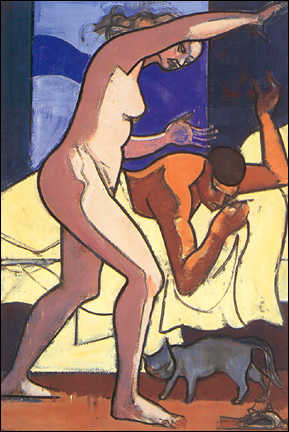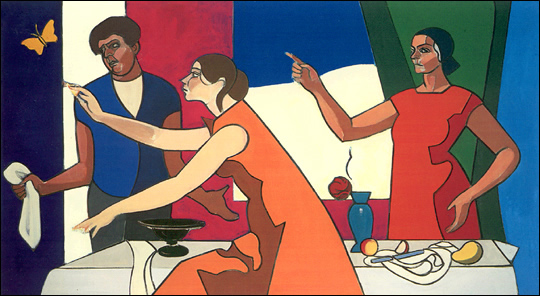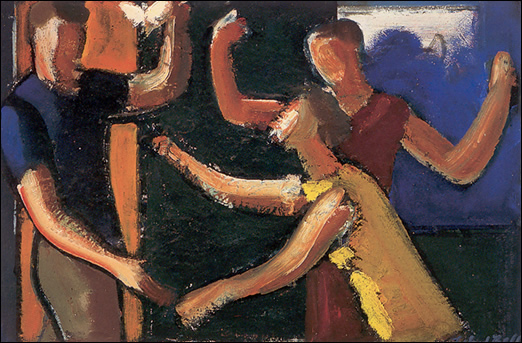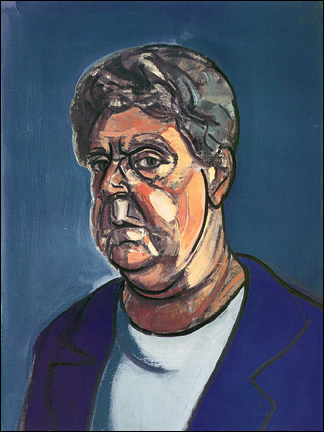Changing Rhythms: Works by Leland Bell, 1950s-1991
April 7 – May 10, 2002
Leland Bell (1922-1991) took inspiration from modernists as diverse as Derain, Hélion, Giacometti, and Mondrian, and he applied the lessons of abstraction to figurative painting.
Excerpted from exhibition catalog text written by curator, Andrea Packard and art historian, Robert M. Murdock, © 2001, List Gallery, Dept. of Art, Swarthmore College, Swarthmore, Pa.“Searching for poetry instead of novelty, Bell focused on three traditional subjects: still life, portraiture, and figure composition. Adamant and often arrogant in arguing his beliefs, he was modest in his subjects, choosing to paint the people and things around him that he loved most…
…Leland Bell’s paintings are immediately recognizable for their singular graphic qualities: black contour lines, bold planes of color, and dynamic composition. His work is clearly more abstract than that of almost any contemporary figurative painter. But his paintings are distinctive, not so much for their obvious abstract qualities, as for their inherent tension, awkwardness, and mystery….In the almost theatrical gestures of the figures and the curious dynamic between principal figures and ancillary yet focal images, Bell’s domestic scenes suggest arcane allegories or elaborately choreographed tableaux. They are truly classical in their restraint and in their carefully composed, interrelated components of figure and ground, black outline, color planes; not one element could be removed without affecting the whole. His self-portraits, on the other hand, are as visceral and intense as the figure groups are restrained and detached. In his heavy, angst-ridden visage one can feel the psychological depth and emotion that underlie his work and that inspired his impassioned articles and lectures on art.”
Jointly organized by Swarthmore College and Haverford College, and curated by Swarthmore’s List Gallery Director, Andrea Packard, this exhibition includes Leland Bell’s portraits, figure groups and still lifes. Its showing at Oglethorpe University Museum of Art is a part of a tour of several sites in the eastern U.S. which originated at Swarthmore College in October 2001, with the final exhibit to be held at Salander-O’Reilly Galleries, New York in September 2002.
Funding for the exhibition and accompanying catalog was provided by the Judith Rothschild Foundation, the William J. Cooper Foundation, and the Swarthmore College Department of Art.
Selected Highlights:


